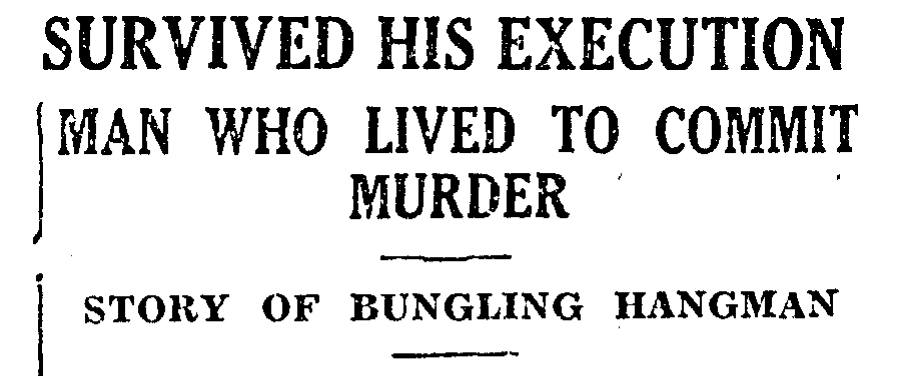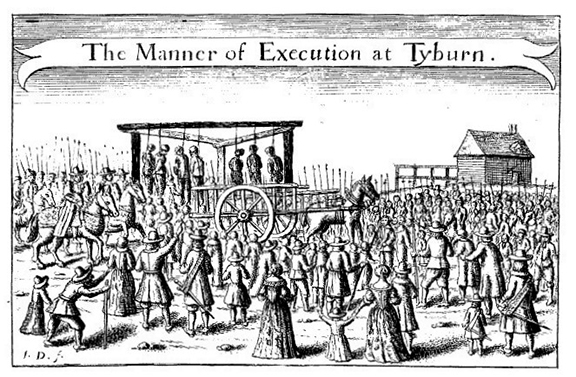
Headline from the Stratford Evening Post, September 4, 1930.
In 1930, Sir Simon van der Aa, of the International Prison Commission shared a unique story with England’s House of Commons Committee, which was considering a bill to abolish capital punishment.
“There has been a case of a man who has undergone capital punishment and yet committed a murder afterwards,” Sir Simon said.
He further explained that the man had been hanging, but when the executioner went to cut him down, he discovered the criminal was still alive.
“The executioner gave him money so that he might escape,” Sir Simon continued. “The man became a servant at a hospital, and three years later, in an excess of fury, he killed a patient.”
The executioner aided the escape because he feared he’d lose his job if anyone found out he’d botched the job. The case reportedly took place in Italy toward the end of the 1700s.

17th-century illustration depicting hanged men, via Wikimedia Commons
Other cases of failed hangings have been recorded, though the survivors didn’t necessarily jump right back into a life of crime.
John Green, a man who had been hanged at Tyburn and presumed dead, was delivered to a dissecting room. Executed criminals often ended up in such places, where anatomists could study their fresh bodies. But in this case, the dead body woke up and recovered—fortunately for him, just before the doctor’s knife finished the hangman’s job.
Another tale shares the story a Swiss man who was hanged thirteen times, “every attempt being frustrated by a peculiarity in the windpipe which prevented strangulation.” No reports indicated whether the final hanging was successful or the man kept his streak alive and convinced the executioner to give up.
In 1650, a female servant in Oxford hanged for “an unusually long time” before being cut to the ground. The fall shocked her system and she was revived. But her second chance at life was short-lived, as she was hanged again the next day.
The last hangings in the United Kingdom occurred in 1964, but England’s capital punishment wasn’t fully abolished until 1998.






![Artificial nose, 17th-18th century, made of plated metal. Such noses would have been made to replace an original, which may have been congenitally absent or deformed, lost through accident or during combat or due to a degenerative disease, such as syphilis. By Science Museum London / Science and Society Picture Library [CC BY-SA 2.0 (https://creativecommons.org/licenses/by-sa/2.0)], via Wikimedia Commons](https://www.weirdhistorian.com/wp-content/uploads/2017/12/Artificial_nose_17th-18th_century_By-Science-Museum-London-Science-and-Society-Picture-Library-CC-BY-SA-2.0-via-Wikimedia-Commons-235x190.jpg)